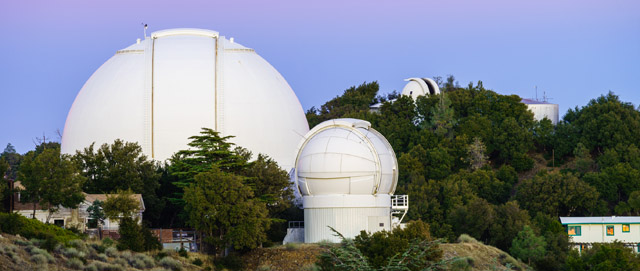Exoplanets — planets orbiting stars that aren’t our Sun — seem to be popping out of the cosmic woodwork now that we know where and how to look for them. The Kepler mission alone has discovered 961 of them, and it’s only looking at a tiny sliver of distant space. Just think of how many we’ll find when the new James Lick robotic telescope comes online and starts surveying one thousand of our closest solar neighbours.
The Lick Observatory near San Jose, CA has been looking into the heavens since the Victorian Era, but its newest survey platform is straight out of the 21st century. The Automated Planet Finder Telescope (APF) is a fully robotic 2.4-meter optical telescope will scan the entirety of the sky above Mount Hamilton over the next decade, paying special attention to 1,000 nearby (within 100 light years) stars and cataloging about 10 each night. The $US12 million project is looking for rocky planets with a mass 1 – 20 times that of Earth.
To do so, the APF uses a high resolution spectrograph to obtain radial velocity measurements (Doppler effect data) from its observation of the preprogrammed star sets gathered over the course of months. If low-mass planets are orbiting these stars, even if they’re only travelling at a speed of 1 m/s, the data will reveal their presence.
“The planetary systems we’re finding are our nearest neighbours. Those are the ones that will matter to future generations,” said project lead Steve Vogt, professor of astronomy and astrophysics at UC Santa Cruz and designer of the telescope’s spectrometer, in a press statement. This device employs a large camera to focus a beam of light onto a CCD, the spectrum of which the spectrograph then analyses and records.
Since the skies above San Jose are clear roughly 90 per cent of the time between May and October, the APF will be able to collect data nearly every night which should greatly increase the rate of exoplanet discovery.
“The vast majority of planets reveal themselves over time through a series of measurements, and the signals are buried in the huge stream of data that comes back from the telescope every night, so this software package is an integral part of the detection process,” Greg Laughlin, the professor and chair of astronomy and astrophysics at UCSC that developed the telescope’s robotic control software said. “APF is the best current planet-finding instrument that can see the sky above our hemisphere. It’s remarkable that this cutting-edge research can be done within sight of Silicon Valley — you don’t have to go to Hawaii or Chile.”
With this system scanning the skies, we’re sure to find Earth 2 in no time. [Lick Observatory – Wiki – Exoplanets – UCSC – Physorg]
Top Image: Shutterstock
